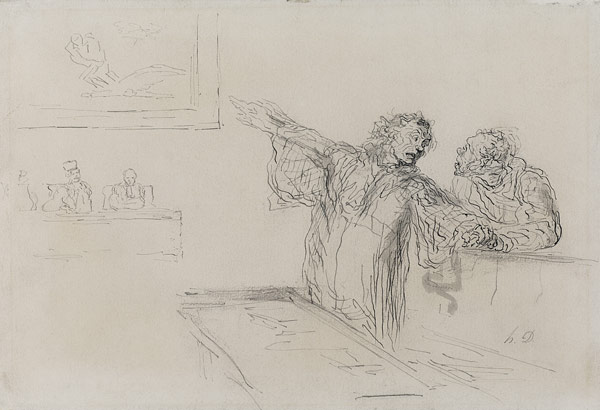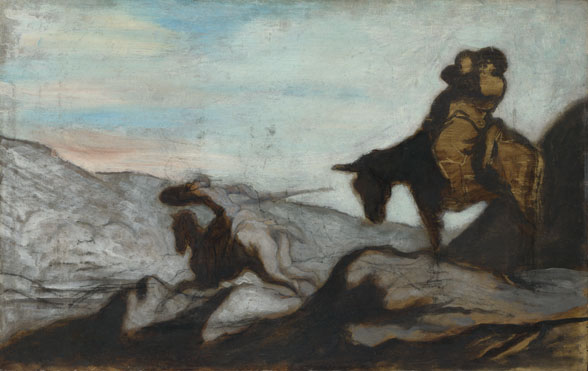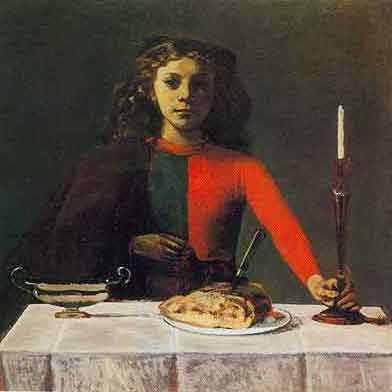From 3 July to 29 September 2013, the Städel Museum will feature the survey “Hans Thoma. ‘The German People’s Favourite Painter’”, devoted to the lifework of a painter and graphic artist celebrated in Germany in the period around 1900. The presentation will take a closer look at why Hans Thoma (1839–1924) – once referred to by the public and art critics alike as the “greatest German master” – attained such enormous popularity around the turn of the century, while also seeking explanations for his increasing reassessment after 1945. With the aid of more than one hundred works, the first Hans Thoma survey to be staged in a German museum in more than twenty years will show that Thoma was far more than just the painter of the picturesque Black Forest landscapes with which he is widely associated today. The rigour and precision of his works are disconcerting. His painting style combines realist and symbolist tendencies and anticipates important elements of both Art Nouveau and New Objectivity. His artistic diversity as well as his role as a key figure in “German art” around 1900 – an exploitation which continued until well into the National Socialist period – make him a phenomenon that demands re-evaluation. In the exhibition, Thoma's work – which is characterized by variety with regard to motif and media alike – and its unusual contemporary presentation will hold many surprises in store for the visitors.
Beside the collection of the Staatliche Kunsthalle Karlsruhe, the Städel Museum has in its possession one of the most extensive Thoma holdings in the world, comprising more than eighty paintings and several hundred works on paper. The Städel's last monographic presentation of this artist took place in 1934. Since the Second World War, works from the museum's Thoma collection have been shown only on isolated occasions. One of the chief aims of the coming show is to take a critical look at Thoma's art and the history of its reception, which together represent a chapter in the history of German art as suspenseful as it is momentous. The chief focus will be directed towards gaining a new scholarly perspective on the museum's Thoma holdings. In keeping with this concept, no loans will be shown; instead, the attention will be directed solely towards the Städel's own Thoma works. The presentation will approach the artist's complex oeuvre from various angles, and shed light on what for many viewers is certain to be an unexpectedly large number of different facets. It will encompass paintings and prints, but also wall decorations, calendars, postcard books and children's primers. Thoma depicted religious and mythological scenes as well as motifs from the operas of Richard Wagner. With a wide range of pictorial genres and themes, he catered to a public that was hoping for an art that would provide it with values and contents suitable for establishing a national identity.
“Hans Thoma is a central figure in the history of German art and his work a fundamental element in the history of collecting at our museum. Our intention with this exhibition is to make the Städel's extensive Thoma holdings accessible to the public in all its breadth and to draw attention to the works' historical context”, comments Max Hollein, Städel Museum director.
In the process, the Städel Museum will also take a closer look at the history of its collection, for instance the fact that Hans Thoma was avidly supported and promoted by Henry Thode, who directed the institute from 1889 to 1891. Light will moreover be shed on the museum's purchasing policies during the 1930s, particularly in view of the fact that a large share of the Thoma holdings entered the collection in 1939.
Hans Thoma’s Vita
Born in Bernau in the Black Forest in 1839, Thoma already began painting portraits as well as the landscapes of his native region at an early age. In 1859 Grand Duke Friedrich I of Baden awarded him a scholarship to attend the Grand Ducal art school in Karlsruhe. Among his teachers there were Johann Wilhelm Schirmer, Ludwig des Coudres and Hans Canon. Thoma completed his studies in 1866 and then – unsuccessfully – sought employment as a drawing teacher in Basel. In 1867 he moved to Düsseldorf, where he formed a friendship with the painter Otto Scholderer of Frankfurt. They travelled to Paris together in 1868 and saw an exhibition of the work of Gustave Courbet, whose painting made a deep impression on Thoma. Two years later Thoma moved to Munich and joined the circle around Wilhelm Leibl. His encounter with Arnold Böcklin inspired him to explore allegorical and mythological themes and engage with Italy and its art. He travelled to that country altogether five times and within that context made the acquaintance of Adolf von Hildebrand and Hans von Marées. In 1875 Thoma met Bonicella “Cella” Berteneder – his future wife – in Munich. She became his pupil and repeatedly posed for him as well. Thoma lived in Frankfurt from 1877 to 1899, first in Lersnerstrasse, later in Wolfsgangstrasse. In Mainzer Landstrasse he initially shared a studio with Wilhelm Steinhausen, who had been a fellow pupil in Karlsruhe. In Frankfurt Thoma found a circle of supporters and here he achieved his first artistic successes. He left the city when he was appointed to serve as director of the Großherzogliche Gemäldegalerie (Grand Ducal Painting Gallery; today the Staatliche Kunsthalle) Karlsruhe and professor at the Großherzoglich-Badischen Akademie der Bildenden Künste (Grand Ducal Baden Academy of the Fine Arts). His seventieth birthday was honoured with the opening of an annex to the Painting Gallery housing the Hans Thoma Museum and the Hans Thoma Chapel decorated by the artist himself and still on view today. Hans Thoma died in Karlsruhe on 7 November 1924.
A Tour of the Exhibition
The presentation on the upper floor of the exhibition wing will be divided into four sections. The first room and section will provide an overview of the artist and his work. There the visitors will be introduced to the diversity of Thoma's artistic oeuvre with regard to motif and media alike – an initial impression which will be expanded on in the following rooms. The spectrum will range from realistic works dating from the early years of Thoma's career, such as

Feeding the Chickens (1864),
to the fantasy motifs – for example

Riding on a Bird (1885)
– adopted by Thoma in the 1870s under the influence of his friendship to Böcklin. This first section of the show will also address the dissemination of his artistic work. “No other German artist ever attained such popularity within his lifetime”, points out Felix Krämer, head of the modern art department at the Städel and curator of the exhibition. Thoma produced prints, postcard books, calendars, war postcards and other media, all of which contributed significantly to increasing his renown around 1900. Another focus of this section will be the question as to what is “German” about Thoma's art – a theme encountered again and again in the reception of his oeuvre over the decades.
Chapter two of the presentation will be devoted to the landscapes executed by the artist primarily in the Black Forest and the Taunus, his portraits, and his genre depictions showing idyllic scenes of rural life. The displays here will include such works as

On the Glade (1876)

or the Portrait of Prince Frederick Charles of Hesse (1892).
Homeland, closeness to nature and the glorification of simple country life were the themes Thoma favoured most in this period. An important aspect in this context is the artist's encounter with the art of Courbet and the lasting impact it had on his own work, to which the Boy with Dead Deer (1868), for example, testifies.
This influence still makes itself felt in many of Thoma's later works, for instance the painting

In the Hammock (1876).
There are nevertheless distinct differences between the two artists: the life of the rural population is always cheerful in Thoma's scenes, free of hardship and social cruelty, and no trace of revolutionary pictorial themes is to be found. The beauty of the artist's native landscape and quiet domestic contentment are the focusses of his art.
From 1877 to 1899, Thoma lived in Frankfurt. The third section of the show will revolve around his time in the metropolis on the Main and feature likenesses of his patrons, among them the

Portrait of Henry Thode (1890)
executed by Thoma during the period of the art historian's Städel directorship.
During his time in this office, Thode tried to purchase paintings by Thoma for the Städel, but was prevented by the administration. Later as well, Thode continued his efforts to spread the fame of his friend Hans Thoma by means of publications and within the framework of his teaching activities at the Universität Heidelberg. This chapter of the exhibition will moreover present works by artist colleagues and friends of Thoma's in Frankfurt, among them Wilhelm Steinhausen, Otto Scholderer and Peter Burnitz.
Thoma's designs for Cafè Bauer on Hauptwache as well as paintings of local motifs such as

”Die Öd” View of Holzhausen Park (1883)
will also be on view. Although the recognition of Thoma's art increased steadily during his years in Frankfurt, it was not here that he made his artistic breakthrough, but in his former sphere of influence – Munich, whose Kunstverein staged an enthusiastically welcomed Thoma exhibition in 1890. Precisely his older works, and above all his landscape depictions – to whatever degree they had been regarded a provocative challenge to academic painting at the time of their execution – now jibed perfectly with the spirit of the times. Thoma's art suggested an idyllic world, whereas in real life the dark sides of industrialization were becoming visible everywhere.
In his Frankfurt years Thoma made the acquaintance of the wife of the composer Richard Wagner and attended the Bayreuth Festival several times. He designed wall decorations on Wagner's operas as well as a painting series on the Ring of the Nibelung; for the new production of that opera in 1896 he was moreover commissioned by Cosima Wagner to design the costumes. From this time onwards, Wagner had a permanent place in Thoma's oeuvre.
The fourth section of the exhibition will show, on the one hand, works inspired by Wagner operas, for example

The Gods Travelling to Valhalla (1880),
and on the other hand mythological and religious scenes as well as allegories. For Thoma, mythological figures such as satyrs or the

Three Merwomen (1879)
symbolized the primordial unity of man and nature. Motifs of this kind bear witness to the influence of Arnold Böcklin, with whom Thoma had cultivated contact since his Munich period, and who played a significant role in the artistic development of his younger German colleague. Whereas before his friendship with Böcklin there had been no works on mythological themes in Thoma's oeuvre, from the mid-1870s onwards putti, mermaids, equestrians and figures of the Grim Reaper regular populated his compositions. Religious themes also became more dominant in Thoma's works as time went on. A motif he devoted himself to repeatedly, for example, was the Flight into Egypt.

Flight into Egypt, 1879, oil on canvas, Städel Museum, Frankfurt/ Main, Photo: Städel Museum – ARTOTHEK, 115,8 x 160,5 cm.
Beginning in the 1880s, mythological and religious scenes came to account for the majority of his oeuvre, but did not arouse the same enthusiasm in the public as his early works had done.
In general, Thoma refrained from depicting modern life in his art. No contemporary architecture or examples of the technical achievements of the time are found in his compositions. On the contrary, his works permitted withdrawal from a world of technical progress and industrialization. “As a ‘man of the people’, Thoma was an ideal personification of the artist-prophet whose work promised cultural renewal through a return to the simple and elemental”, explains Nerina Santorius, who curated the show with Felix Krämer. Thoma's art presents timeless ideal states, and man and nature in unbroken harmony with one another.
Towards the end of the nineteenth century, Thoma was stylized as a model for the generation of artists active at that time. Particularly after his death in 1924, there was a great amount of interest in Thoma publications and exhibitions. A large percentage of the Städel's Thoma holdings came to the museum in the 1930s. After World War II, the perspective on Thoma's oeuvre became more critical. The exhibition developed by the Städel Museum will now offer an opportunity for a more nuanced look at this chapter in the history of German art, and invite visitors to share in an unbiased view of Thoma's work.
More images from the exhibition:

Hans Thoma (1839-1924), Siegfried, Postcard, 1914, Städel Museum, Frankfurt/ Main, Photo: Städel Museum.

Hans Thoma (1839-1924), The War, 1907, oil on canvas, Städel Museum, Frankfurt/ Main, Photo: Städel Museum – ARTOTHEK, 72 x 64 cm.

Hans Thoma (1839-1924), Under the Lilac, 1871, oil on canvas, Städel Museum, Frankfurt am Main, Photo: Städel Museum – ARTOTHEK, 74,5 x 62,5 cm.

Hans Thoma (1839-1924), Lonely Ride, 1889, Städel Museum, Frankfurt/ Main, Photo: U. Edelmann - Städel Museum – ARTOTHEK, 74,1 x 62,4 cm.

Hans Thoma (1839-1924), Wotan and Brunhilda, 1876, oil on canvas, Städel Museum, Frankfurt/Main, Photo: U. Edelmann - Städel Museum – ARTOTHEK, 74 x 61 cm.

Hans Thoma (1839-1924), Self-portrait in front of a Birch Forest, 1899, oil on canvas, Städel Museum, Frankfurt/ Main, Photo: Edelmann - Städel Museum – ARTOTHEK, 94 x 75,5 cm.




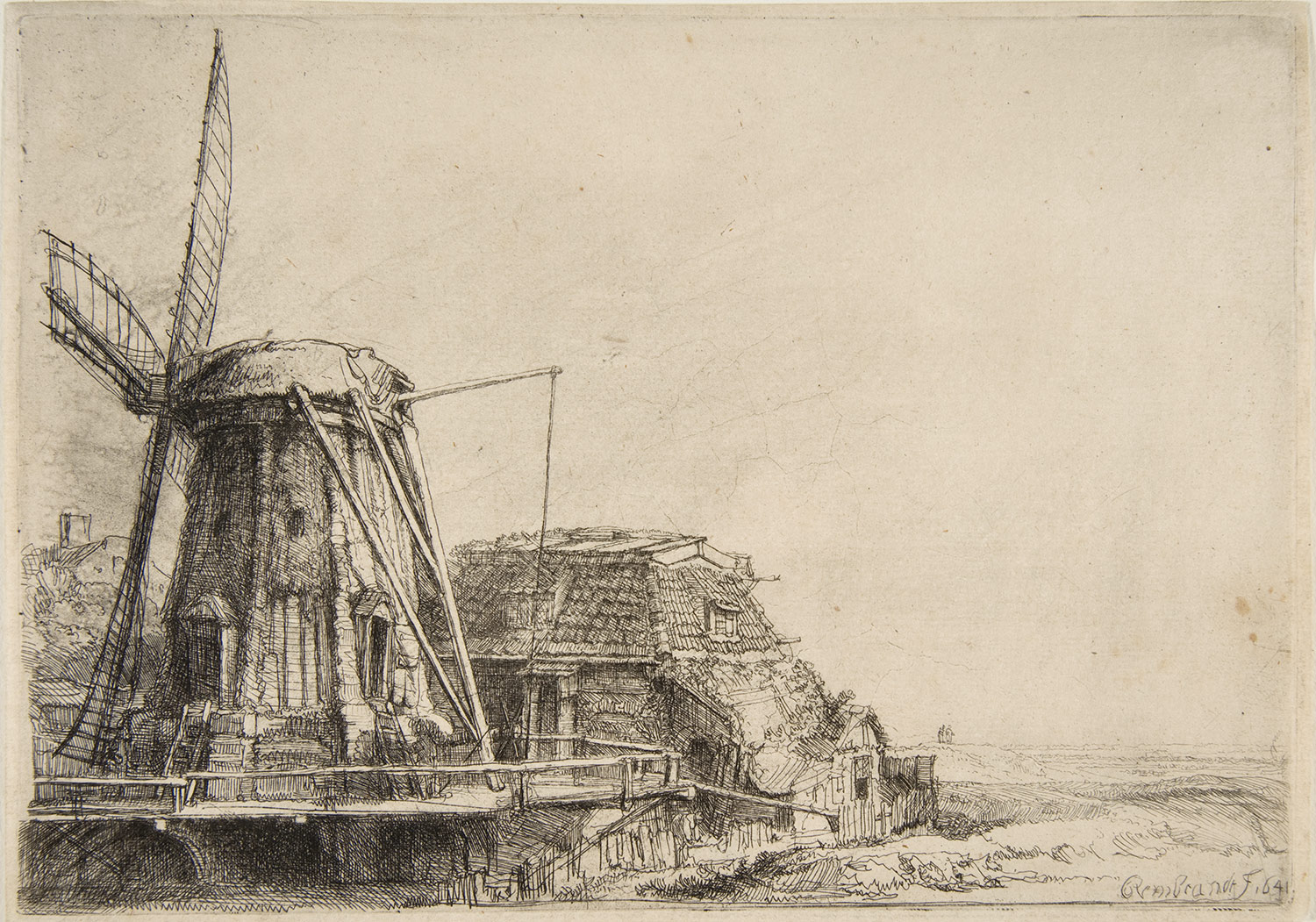










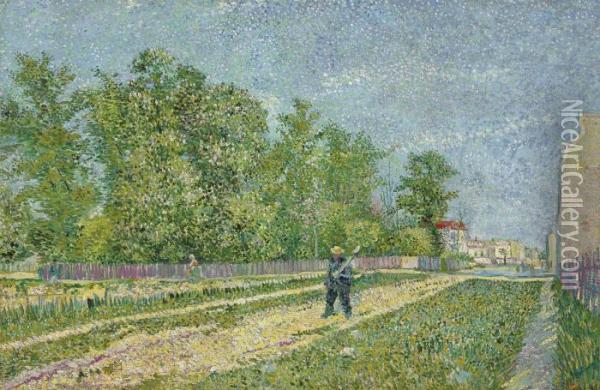



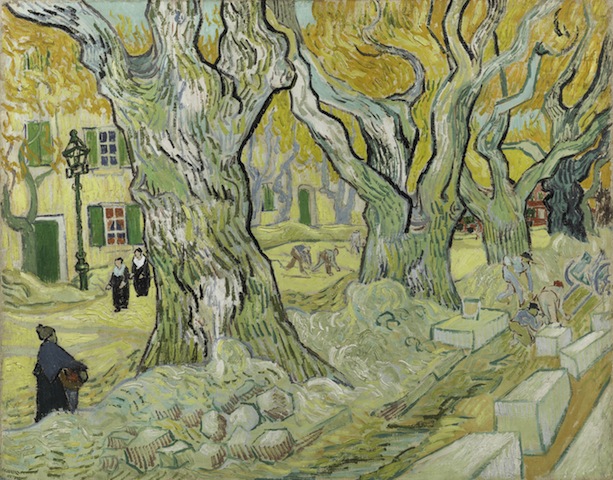


.jpg!Large.jpg)


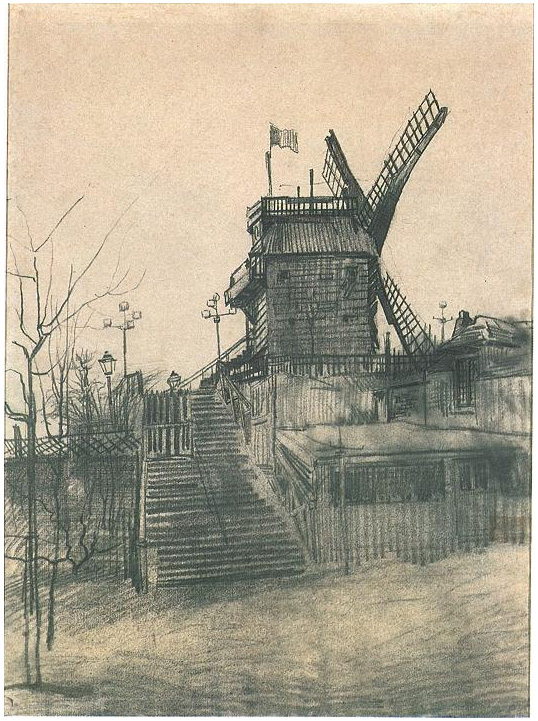



%20by%20Vincent%20Van%20Gogh.jpg)


_van_Gogh_Kroller.jpg/490px-Portrait_of_the_Postman_Joseph_Roulin_(1889)_van_Gogh_Kroller.jpg)


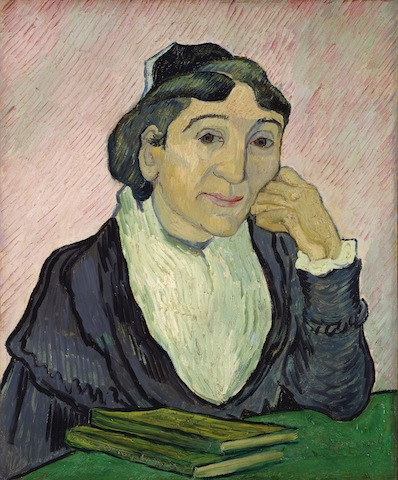
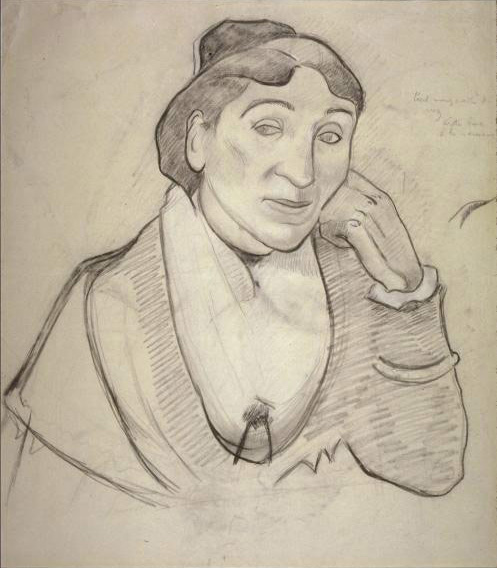

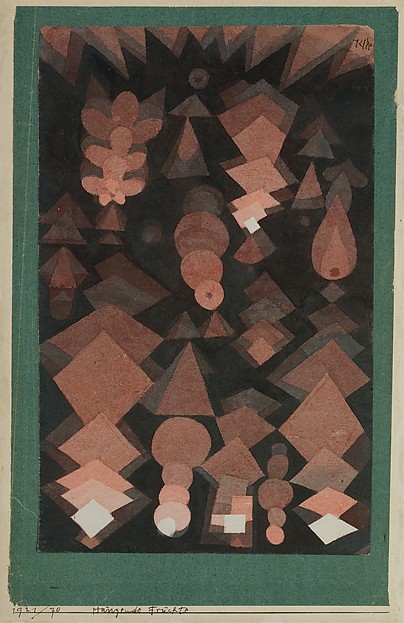



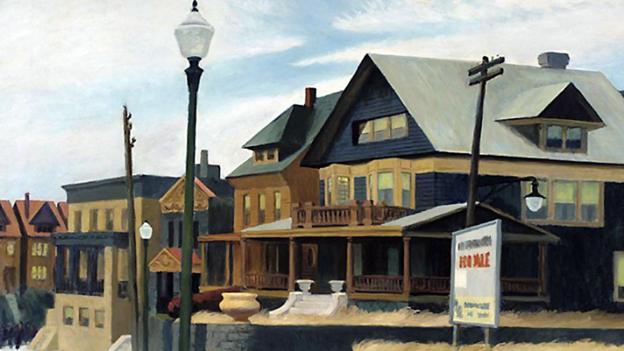
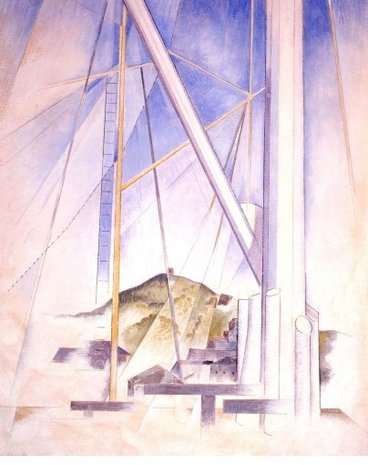


























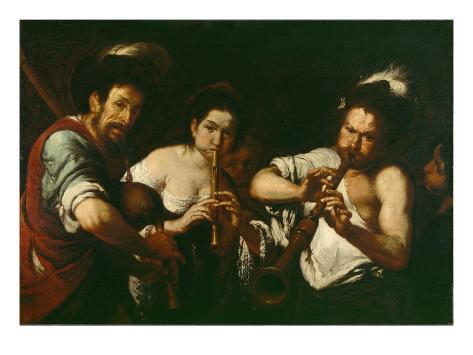
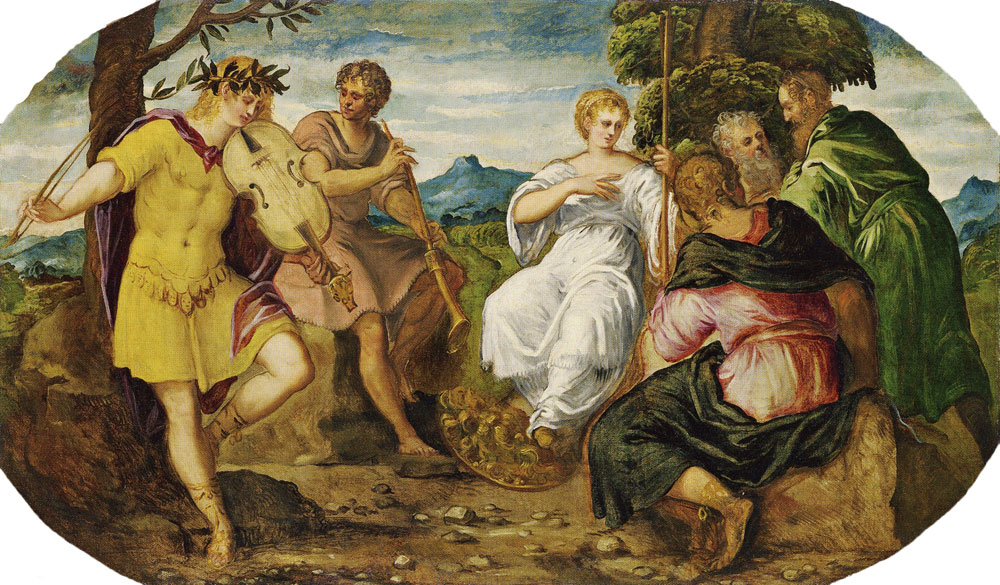















,+1888,.jpg)

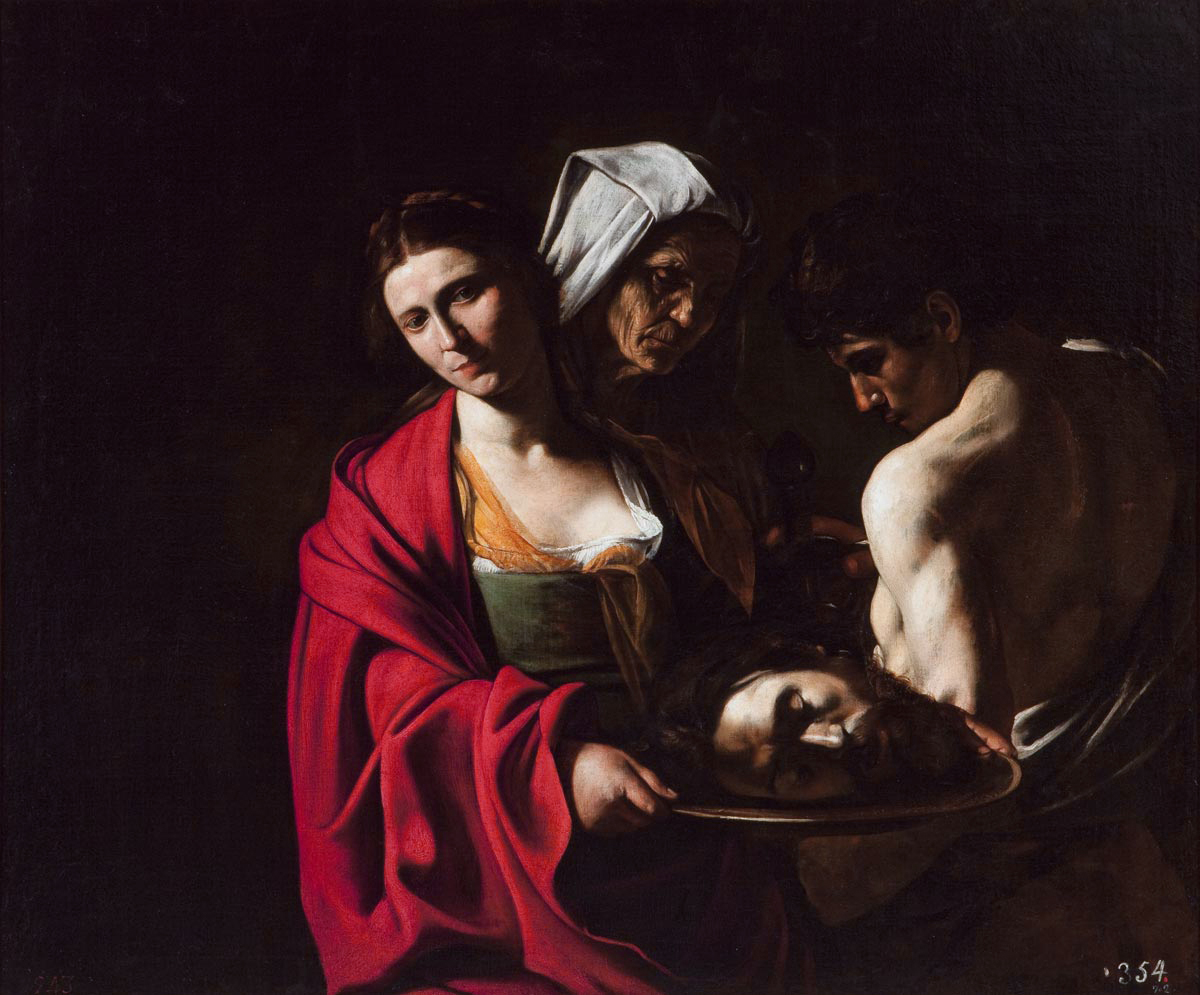
.jpg/903px-Salome_with_the_Head_of_John_the_Baptist-Caravaggio_(1610).jpg)
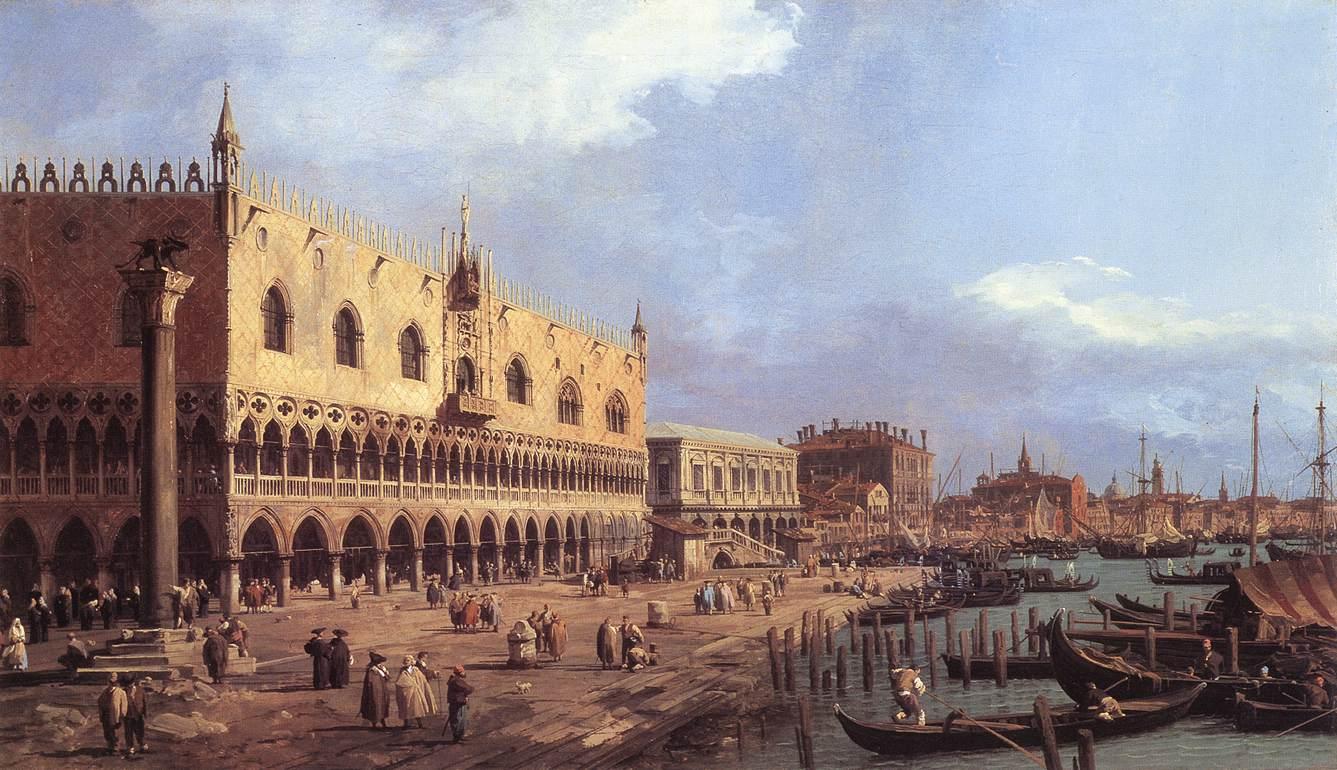
.jpg)






























_-_WGA7309.jpg)
_-_Google_Art_Project.jpg/800px-Francisco_Jos%C3%A9_de_Goya_y_Lucientes_-_Where_There's_a_Will_There's_a_Way_(A_way_of_Flying)_-_Google_Art_Project.jpg)





